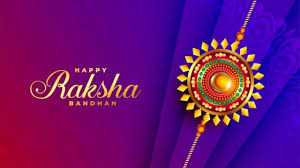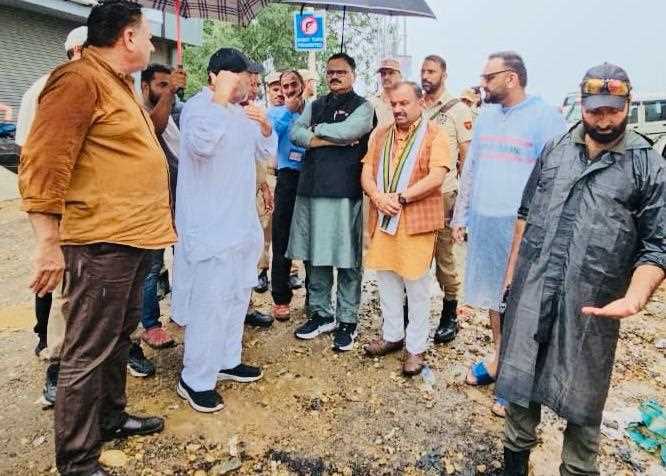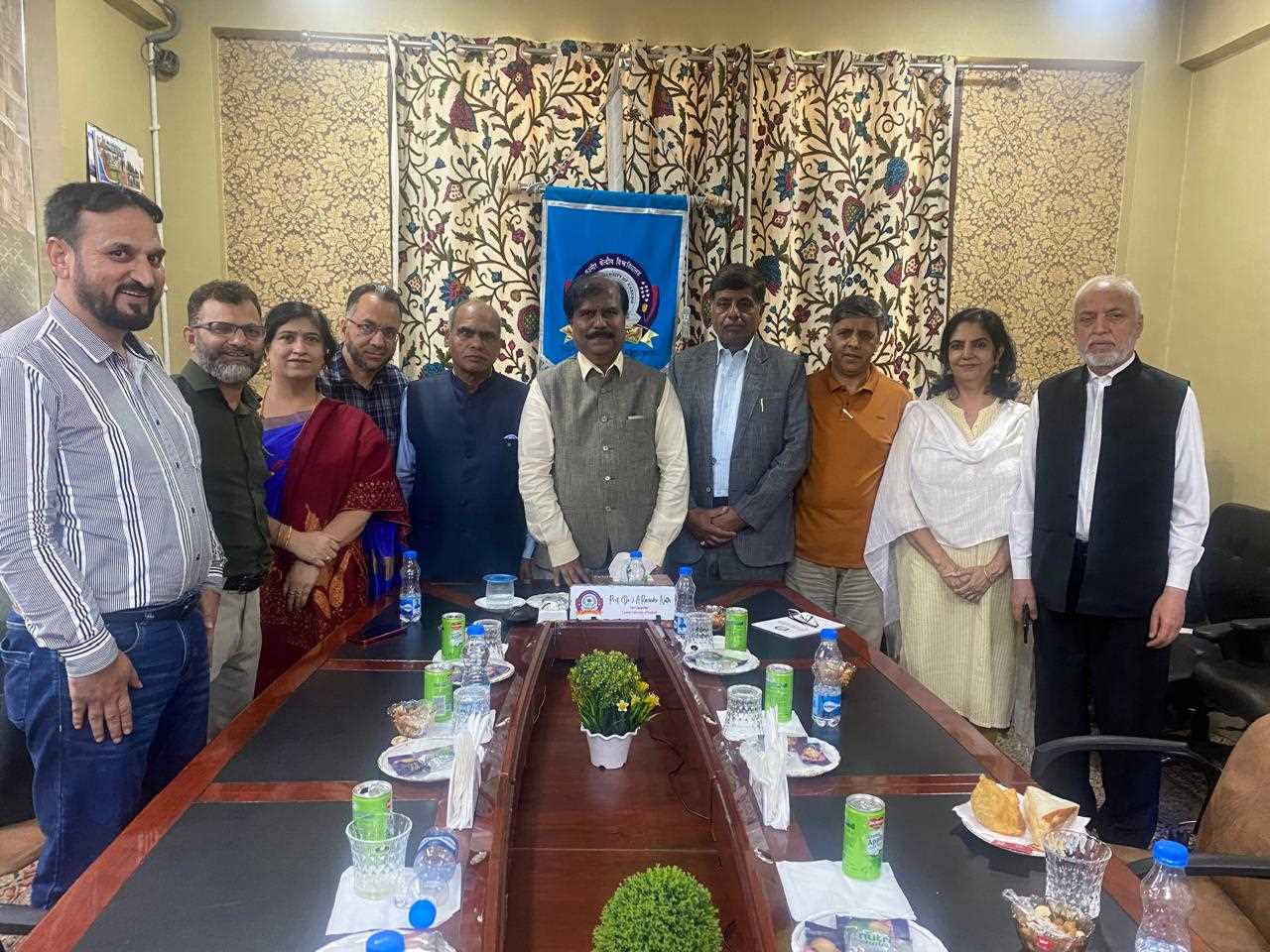
The expression "Raksha Bandhan" (Sanskrit, literally "the bond of protection, obligation, or care") is now principally applied to this ritual. Until the mid-20th century, the expression was more commonly applied to a similar ritual, held on the same day, with precedence in ancient Hindu texts
Introduction
We are celebrating Rakhsha Bandhan on 9th August 2025 with a usual fervour and sprit. And my mind went the essence of the practice that has been going on since the ages in India. And it started to raise the questions before my heart and my heart replied in an emotional way that I would like to pen down at the end this write up. As of now I am helpless to produce the details of this festival. Raksha Bandh is a popular and traditionally Hindu annual rite or ceremony that is central to a festival of the same name celebrated in South Asia. It is also celebrated in other parts of the world significantly influenced by Hindu culture. On this day, sisters of all ages tie a talisman or amulet called the Rakhi around the wrists of their brothers. The sisters symbolically protect the brothers, receive a gift in return, and traditionally invest the brothers with a share of the responsibility of their potential care. Coming to the etymology of the word Rakhi, let me put forth some references from dictionaries that are acknowledged throughout the world.
According to the Oxford English Dictionary, Third Edition, 2008, the Hindi word, Rākhī derives from the Sanskrit Rakṣikā, a join: Rakṣā protection, amulet.1829 The first attested use in the English language dates to 1829, in James Tod's, Ann. & Antiq. Rajasthan I. p. 312, "The festival of the bracelet (Rakhi) is in Spring ... The Rajpoot dame bestows with the Rakhi the title of adopted brother; and while its acceptance secures to her all the protection of a 'cavalier servant', scandal itself never suggests any other tie to his devotion."
1857, Forbes
Dictionary of Hindustani and English Saluno: the full moon in Sawan at which time the ornament called Rakhi is tied around the wrist A piece of thread or silk bound round the wrist on the festival of Salūno or the full moon of Sāvan, either as an amulet and preservative against misfortune, or as a symbol of mutual dependence, or as a mark of respect; the festival on which such a thread is tied—Rākhī-Bandhan, s.f. The festival called Rākhī.
1899 Monier-Williams
A Sanskrit–English dictionary Rakshā: "a sort of bracelet or amulet, any mysterious token used as a charm, ... a piece of thread or silk bound round the wrist on partic occasions (esp. on the full moon of Śrāvaņa, either as an amulet and preservative against misfortune, or as a symbol of mutual dependence, or as a mark of respect".1990, Jack Goody: "The ceremony itself involves the visit of women to their brothers ... on a specific day of the year when they tie a gaudy decoration on the right wrists of their brothers, which is at once "a defence against misfortune, a symbol of dependence, and a mark of respect."
Raksha Bandhan is observed on the last day of the Hindu lunar calendar month of Shravana, which typically falls in August. The expression "Raksha Bandhan" (Sanskrit, literally "the bond of protection, obligation, or care") is now principally applied to this ritual. Until the mid-20th century, the expression was more commonly applied to a similar ritual, held on the same day, with precedence in ancient Hindu texts. In that ritual, a domestic priest ties amulets, charms, or threads on the wrists of his patrons, or changes their sacred thread, and receives gifts of money. This is still the case in some places. By contrast, the sister-brother festival, with origins in folk culture, had names which varied with location. Some were rendered as Saluno, Silono, and Rakri. A ritual associated with Saluno included the sisters placing shoots of barley behind the ears of their brothers.
Of special significance to married women, Raksha Bandhan is rooted in the practice of territorial or village exogamy. The bride marries out of her natal village or town, and her parents by custom do not visit her in her married home. In rural north India, where village exogamy is strongly prevalent, large numbers of married Hindu women travel back to their parents' homes every year for the ceremony. Their brothers, who typically live with their parents or nearby, sometimes travel to their sisters' married home to escort them back. Many younger married women arrive a few weeks earlier at their natal homes and stay until the ceremony. The brothers serve as lifelong intermediaries between their sisters' married and parental homes, as well as potential stewards of their security.
In urban India, where families are increasingly nuclear, the festival has become more symbolic but continues to be highly popular. The rituals associated with this festival have spread beyond their traditional regions and have been transformed through technology and migration. Other factors that have played a role are: the movies, social interaction, and promotion by politicized Hinduism, as well as by the nation state. Among females and males who are not blood relatives, the act of tying the Rakhi amulets has given rise to the tradition of voluntary kin relations, which has sometimes cut across lines of caste, class, and religion. Authority figures have been included in such a ceremony.
Introspection
The crime record available online/offline as on date shows that these sisters who tie an amulet/ string etc on our wrists are subjected to the violence ranging from domestic to market and beyond. According to the report of National Crime Report Bureau, domestic violence accounts for more than 30% of the crimes against women.
According to the National Crime Records Bureau, in 2011, there were more than 228,650 reported incidents of crime against women, while in 2021, there were 428,278 reported incidents, an 87% increase.65% of Indian men believe women should tolerate violence in order to keep the family together, and women sometimes deserve to be beaten.Statistics calculated from the National Crime Records Bureau capture reporting to the police, most violence against women is not reported to the police. In January 2011, the International Men and Gender Equality Survey. Questionnaire reported that 24% of Indian men had committed sexual violence at some point during their lives.India's Gender Gap Index rating was 0.629 in 2022, placing it in 135th place out of 146 countries. The following statistical data reveals how safe our daughters and sisters are here in India even though Rakhsha Bandhan comes year and every time they tie a Rakhi on our writs and we take an oath to be their guards and rakhshaks. In 2008 there were 21,467 rape cases registered and as on 2023 this graph has risen to 31,204 and to talk of 2022-2025 it is much more. The highest rate of rapes registered in shown in 2016 that counts to 38, 947 . (To Be Continued )
Email:--------------------------------ishaq7007@gmail.com




The expression "Raksha Bandhan" (Sanskrit, literally "the bond of protection, obligation, or care") is now principally applied to this ritual. Until the mid-20th century, the expression was more commonly applied to a similar ritual, held on the same day, with precedence in ancient Hindu texts
Introduction
We are celebrating Rakhsha Bandhan on 9th August 2025 with a usual fervour and sprit. And my mind went the essence of the practice that has been going on since the ages in India. And it started to raise the questions before my heart and my heart replied in an emotional way that I would like to pen down at the end this write up. As of now I am helpless to produce the details of this festival. Raksha Bandh is a popular and traditionally Hindu annual rite or ceremony that is central to a festival of the same name celebrated in South Asia. It is also celebrated in other parts of the world significantly influenced by Hindu culture. On this day, sisters of all ages tie a talisman or amulet called the Rakhi around the wrists of their brothers. The sisters symbolically protect the brothers, receive a gift in return, and traditionally invest the brothers with a share of the responsibility of their potential care. Coming to the etymology of the word Rakhi, let me put forth some references from dictionaries that are acknowledged throughout the world.
According to the Oxford English Dictionary, Third Edition, 2008, the Hindi word, Rākhī derives from the Sanskrit Rakṣikā, a join: Rakṣā protection, amulet.1829 The first attested use in the English language dates to 1829, in James Tod's, Ann. & Antiq. Rajasthan I. p. 312, "The festival of the bracelet (Rakhi) is in Spring ... The Rajpoot dame bestows with the Rakhi the title of adopted brother; and while its acceptance secures to her all the protection of a 'cavalier servant', scandal itself never suggests any other tie to his devotion."
1857, Forbes
Dictionary of Hindustani and English Saluno: the full moon in Sawan at which time the ornament called Rakhi is tied around the wrist A piece of thread or silk bound round the wrist on the festival of Salūno or the full moon of Sāvan, either as an amulet and preservative against misfortune, or as a symbol of mutual dependence, or as a mark of respect; the festival on which such a thread is tied—Rākhī-Bandhan, s.f. The festival called Rākhī.
1899 Monier-Williams
A Sanskrit–English dictionary Rakshā: "a sort of bracelet or amulet, any mysterious token used as a charm, ... a piece of thread or silk bound round the wrist on partic occasions (esp. on the full moon of Śrāvaņa, either as an amulet and preservative against misfortune, or as a symbol of mutual dependence, or as a mark of respect".1990, Jack Goody: "The ceremony itself involves the visit of women to their brothers ... on a specific day of the year when they tie a gaudy decoration on the right wrists of their brothers, which is at once "a defence against misfortune, a symbol of dependence, and a mark of respect."
Raksha Bandhan is observed on the last day of the Hindu lunar calendar month of Shravana, which typically falls in August. The expression "Raksha Bandhan" (Sanskrit, literally "the bond of protection, obligation, or care") is now principally applied to this ritual. Until the mid-20th century, the expression was more commonly applied to a similar ritual, held on the same day, with precedence in ancient Hindu texts. In that ritual, a domestic priest ties amulets, charms, or threads on the wrists of his patrons, or changes their sacred thread, and receives gifts of money. This is still the case in some places. By contrast, the sister-brother festival, with origins in folk culture, had names which varied with location. Some were rendered as Saluno, Silono, and Rakri. A ritual associated with Saluno included the sisters placing shoots of barley behind the ears of their brothers.
Of special significance to married women, Raksha Bandhan is rooted in the practice of territorial or village exogamy. The bride marries out of her natal village or town, and her parents by custom do not visit her in her married home. In rural north India, where village exogamy is strongly prevalent, large numbers of married Hindu women travel back to their parents' homes every year for the ceremony. Their brothers, who typically live with their parents or nearby, sometimes travel to their sisters' married home to escort them back. Many younger married women arrive a few weeks earlier at their natal homes and stay until the ceremony. The brothers serve as lifelong intermediaries between their sisters' married and parental homes, as well as potential stewards of their security.
In urban India, where families are increasingly nuclear, the festival has become more symbolic but continues to be highly popular. The rituals associated with this festival have spread beyond their traditional regions and have been transformed through technology and migration. Other factors that have played a role are: the movies, social interaction, and promotion by politicized Hinduism, as well as by the nation state. Among females and males who are not blood relatives, the act of tying the Rakhi amulets has given rise to the tradition of voluntary kin relations, which has sometimes cut across lines of caste, class, and religion. Authority figures have been included in such a ceremony.
Introspection
The crime record available online/offline as on date shows that these sisters who tie an amulet/ string etc on our wrists are subjected to the violence ranging from domestic to market and beyond. According to the report of National Crime Report Bureau, domestic violence accounts for more than 30% of the crimes against women.
According to the National Crime Records Bureau, in 2011, there were more than 228,650 reported incidents of crime against women, while in 2021, there were 428,278 reported incidents, an 87% increase.65% of Indian men believe women should tolerate violence in order to keep the family together, and women sometimes deserve to be beaten.Statistics calculated from the National Crime Records Bureau capture reporting to the police, most violence against women is not reported to the police. In January 2011, the International Men and Gender Equality Survey. Questionnaire reported that 24% of Indian men had committed sexual violence at some point during their lives.India's Gender Gap Index rating was 0.629 in 2022, placing it in 135th place out of 146 countries. The following statistical data reveals how safe our daughters and sisters are here in India even though Rakhsha Bandhan comes year and every time they tie a Rakhi on our writs and we take an oath to be their guards and rakhshaks. In 2008 there were 21,467 rape cases registered and as on 2023 this graph has risen to 31,204 and to talk of 2022-2025 it is much more. The highest rate of rapes registered in shown in 2016 that counts to 38, 947 . (To Be Continued )
Email:--------------------------------ishaq7007@gmail.com
© Copyright 2023 brighterkashmir.com All Rights Reserved. Quantum Technologies